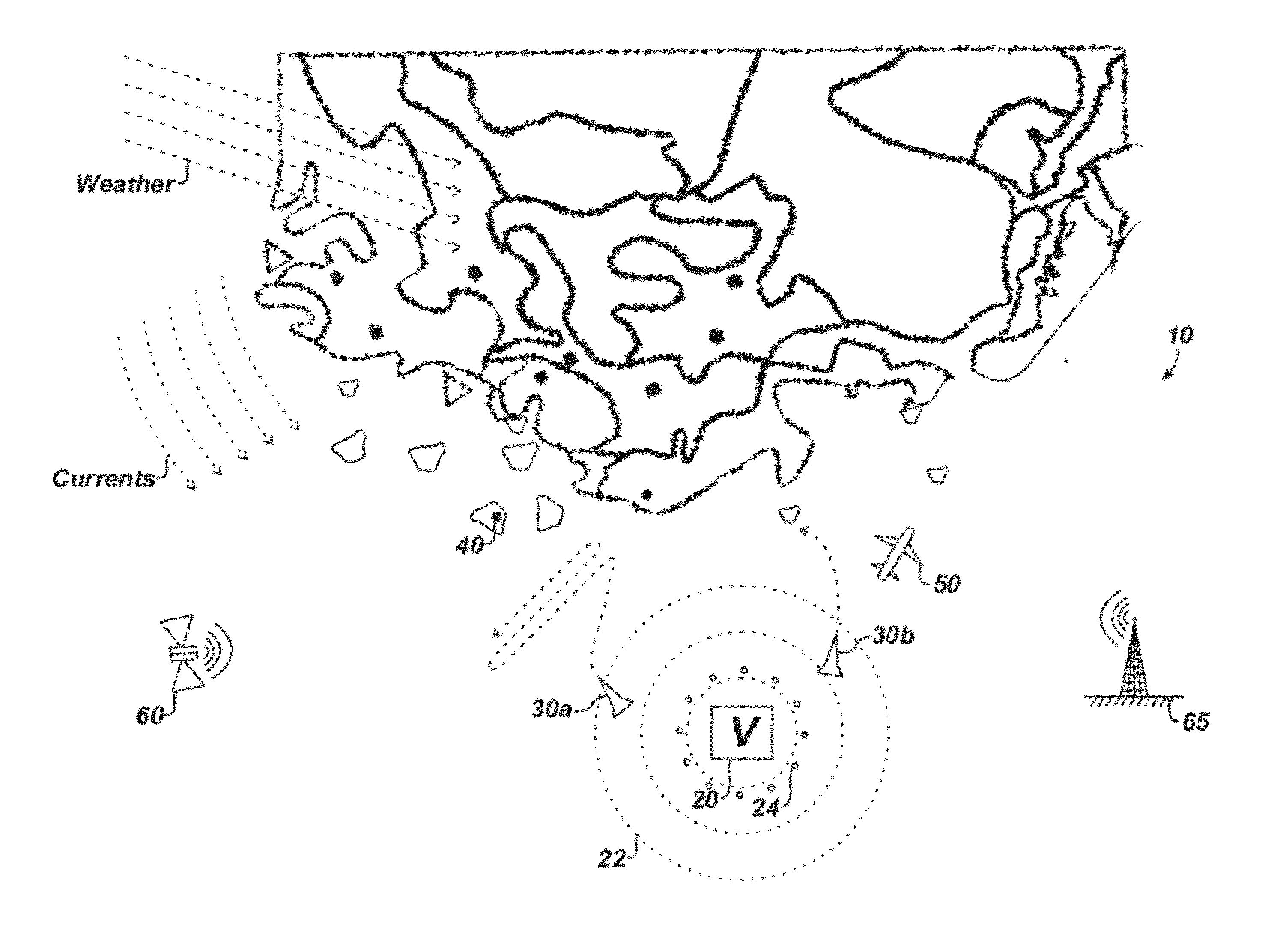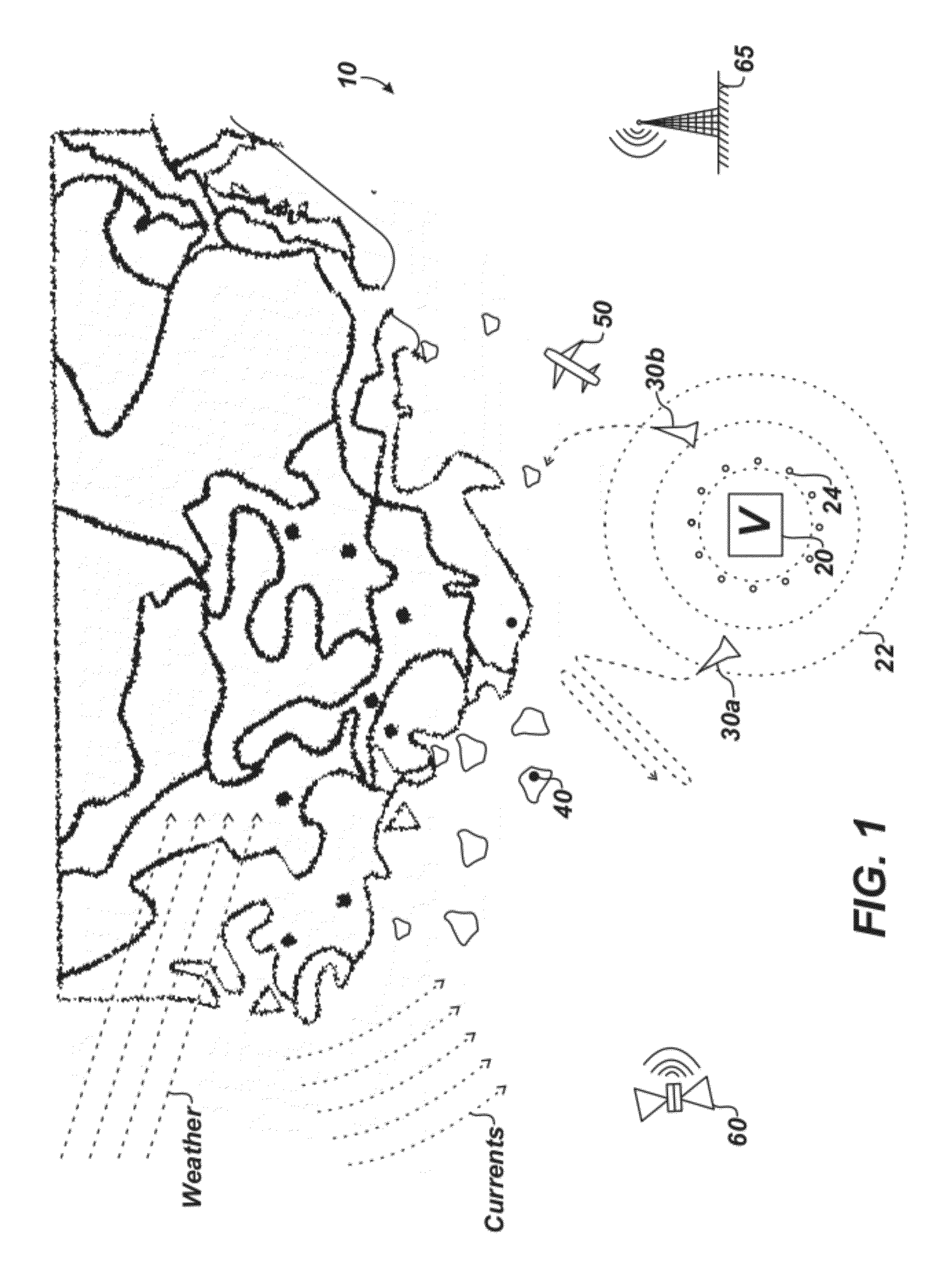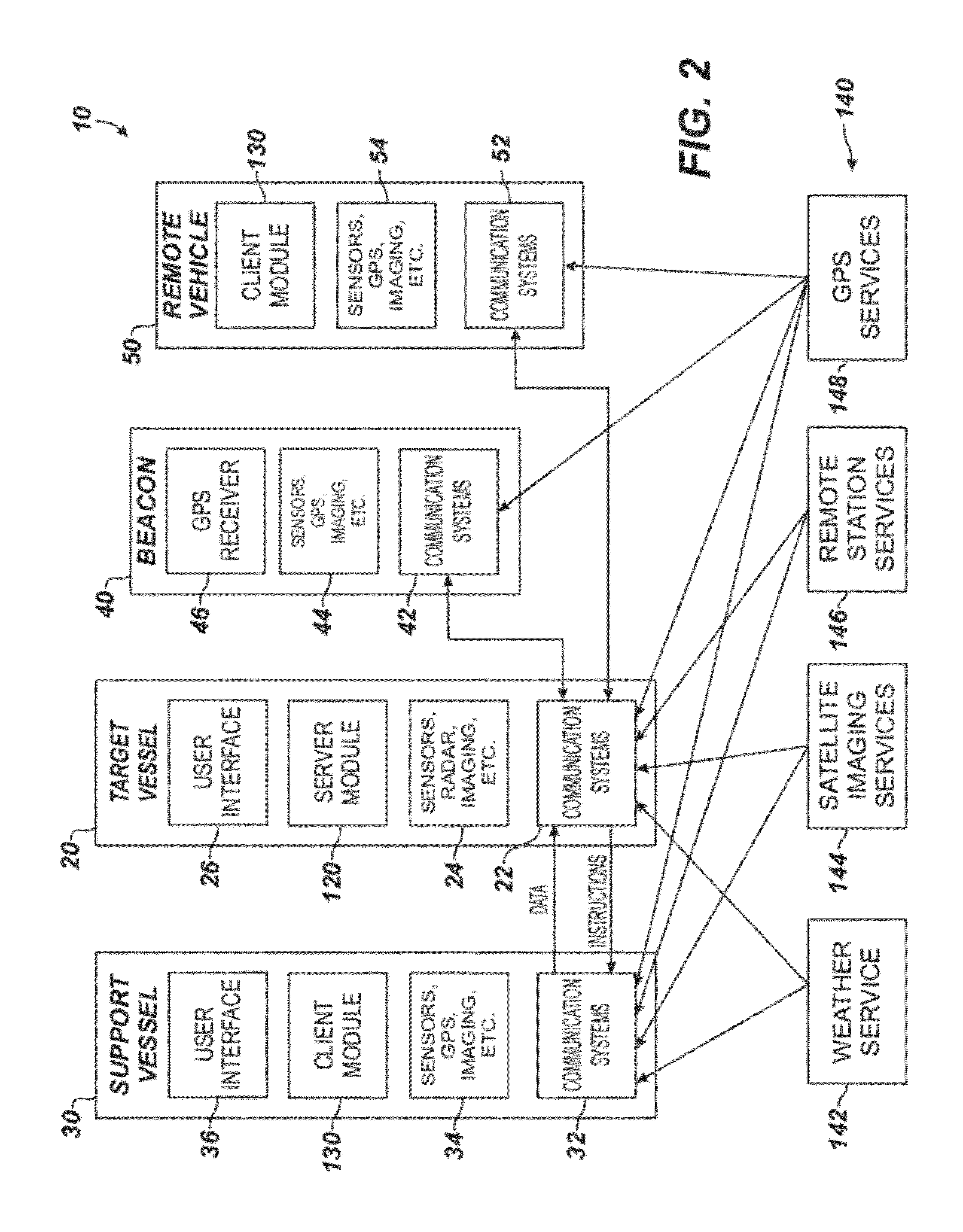Marine Threat Monitoring and Defense System
a technology of applied in the field of marine threat monitoring and defense system, can solve problems such as threat to a structure conducting set operation and threat to the “s
- Summary
- Abstract
- Description
- Claims
- Application Information
AI Technical Summary
Benefits of technology
Problems solved by technology
Method used
Image
Examples
Embodiment Construction
[0020]A. Overview of Monitoring System
[0021]As noted previously, protecting attached, fixed, or stationary marine structures or marine structures with planned movements or routes from marine obstacles and impacts presents a significant challenge to drilling, production, and exploration operations in some marine regions, such as the arctic. To meet this challenge, operators on such a structure can use a marine threat monitoring and defense system 10 as schematically illustrated in FIG. 1. The monitoring system 10 protects a target marine structure 20 in a region, such as the arctic, having floating and / or submerged objects that move in the ocean and threaten the structure 20.
[0022]In general, the target marine structure 20 can be a production vessel, a production platform, a drilling ship, a wellhead, a riser, a seismic survey vessel, or other marine structure used in drilling, production, or exploration operations at sea. The structure 20 can be floating or fixed and can be permanen...
PUM
 Login to View More
Login to View More Abstract
Description
Claims
Application Information
 Login to View More
Login to View More - R&D
- Intellectual Property
- Life Sciences
- Materials
- Tech Scout
- Unparalleled Data Quality
- Higher Quality Content
- 60% Fewer Hallucinations
Browse by: Latest US Patents, China's latest patents, Technical Efficacy Thesaurus, Application Domain, Technology Topic, Popular Technical Reports.
© 2025 PatSnap. All rights reserved.Legal|Privacy policy|Modern Slavery Act Transparency Statement|Sitemap|About US| Contact US: help@patsnap.com



